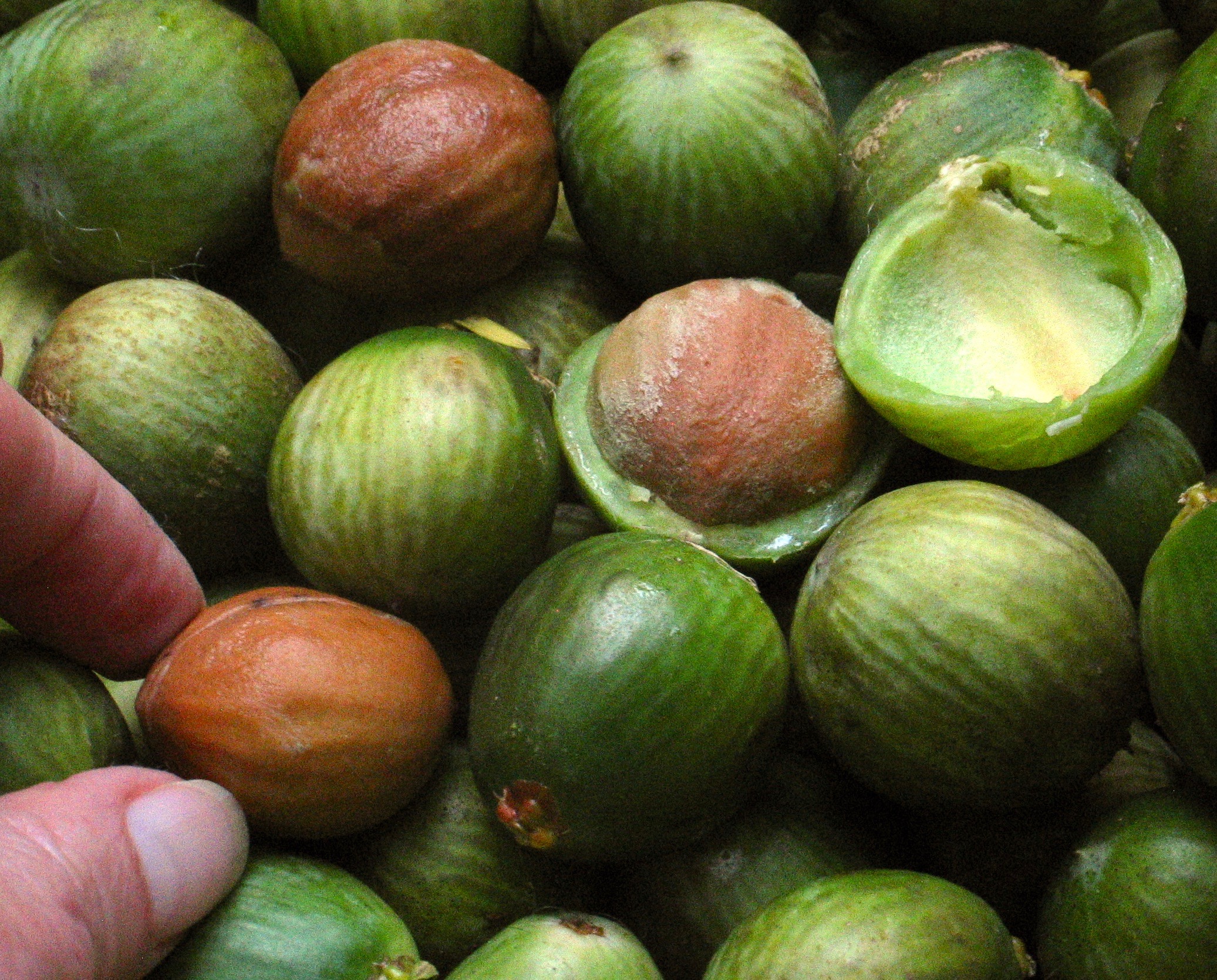|
Torreya Fargesii
''Torreya fargesii'' (Farges nutmeg tree, ) is a species of conifer in the family Taxaceae. It is a large tree that can be up to tall. It is endemic to central and southern China; it is found in Hubei, Hunan, Jiangxi, Shaanxi, Sichuan, and Yunnan provinces, and possibly in Anhui. It occurs in coniferous, mixed, and broad-leaved forests at altitudes ASL. The seeds can be pressed for oil. The wood is used in construction and furniture. The Latin specific epithet In taxonomy, binomial nomenclature ("two-term naming system"), also called nomenclature ("two-name naming system") or binary nomenclature, is a formal system of naming species of living things by giving each a name composed of two parts, bot ... ''fargesii'' refers to the French missionary and amateur botanist Père Paul Guillaume Farges (1844–1912).Janet Mohun (senior editor) References fargesii Trees of China Endemic flora of China Flora of Hubei Flora of Hunan Flora of Jiangxi Flora o ... [...More Info...] [...Related Items...] OR: [Wikipedia] [Google] [Baidu] |
Adrien René Franchet
Adrien René Franchet (21 April 1834 in Pezou – 15 February 1900 in Paris) was a French botanist, based at the Paris Muséum national d'Histoire naturelle. He is noted for his extensive work describing the flora of China and Japan, based on the collections made by French Catholic missionaries in China, Armand David, Pierre Jean Marie Delavay, Paul Guillaume Farges, Jean-André Soulié, and others. He was the taxonomic author of many plants, including a significant number of species from the genera '' Primula'' and ''Rhododendron''. The following genera are named in his honor: * ''Franchetella'', family Sapotaceae, named by Jean Baptiste Louis Pierre. * ''Franchetia'', family Rubiaceae, named by Henri Ernest Baillon. *'' Sinofranchetia'', family Lardizabalaceae, named by William Botting Hemsley. Selected writings * ''Essai sur la distribution géographique des plantes phanérogames dans le département de Loir-et-Cher'', 1868 - Essay on the geographical distri ... [...More Info...] [...Related Items...] OR: [Wikipedia] [Google] [Baidu] |
Above Mean Sea Level
Height above mean sea level is a measure of the Vertical position, vertical distance (height, elevation or altitude) of a location in reference to a historic mean sea level taken as a vertical datum. In geodesy, it is formalized as ''orthometric heights''. The combination of unit of measurement and the physical quantity (height) is called "metres above mean sea level" in the metric system, while in United States customary units, United States customary and imperial units it would be called "Foot (length), feet above mean sea level". Mean sea levels are affected by climate change and other factors and change over time. For this and other reasons, recorded measurements of elevation above sea level at a reference time in history might differ from the actual elevation of a given location over sea level at a given moment. Uses Metres above sea level is the standard measurement of the elevation or altitude of: * Geographic locations such as towns, mountains and other landmarks. * The ... [...More Info...] [...Related Items...] OR: [Wikipedia] [Google] [Baidu] |
Flora Of Shaanxi
Flora (: floras or florae) is all the plant life present in a particular region or time, generally the naturally occurring ( indigenous) native plants. The corresponding term for animals is ''fauna'', and for fungi, it is ''funga''. Sometimes bacteria and fungi are also referred to as flora as in the terms ''gut flora'' or ''skin flora''. Etymology The word "flora" comes from the Latin name of Flora, the goddess of plants, flowers, and fertility in Roman mythology. The technical term "flora" is then derived from a metonymy of this goddess at the end of the sixteenth century. It was first used in poetry to denote the natural vegetation of an area, but soon also assumed the meaning of a work cataloguing such vegetation. Moreover, "Flora" was used to refer to the flowers of an artificial garden in the seventeenth century. The distinction between vegetation (the general appearance of a community) and flora (the taxonomic composition of a community) was first made by Jules Thurman ... [...More Info...] [...Related Items...] OR: [Wikipedia] [Google] [Baidu] |
Endemic Flora Of China
Endemism is the state of a species being found in a single defined geographic location, such as an island, state, nation, country or other defined zone; organisms that are indigenous to a place are not endemic to it if they are also found elsewhere. For example, the Cape sugarbird is found exclusively in southwestern South Africa and is therefore said to be ''endemic'' to that particular part of the world. An endemic species can be also be referred to as an ''endemism'' or in scientific literature as an ''endemite''. For example '' Cytisus aeolicus'' is an endemite of the Italian flora. '' Adzharia renschi'' was once believed to be an endemite of the Caucasus, but it was later discovered to be a non-indigenous species from South America belonging to a different genus. The extreme opposite of an endemic species is one with a cosmopolitan distribution, having a global or widespread range. A rare alternative term for a species that is endemic is "precinctive", which applies to s ... [...More Info...] [...Related Items...] OR: [Wikipedia] [Google] [Baidu] |
Trees Of China
In botany, a tree is a perennial plant with an elongated stem, or trunk, usually supporting branches and leaves. In some usages, the definition of a tree may be narrower, including only woody plants with secondary growth, plants that are usable as lumber or plants above a specified height. In wider definitions, the taller palms, tree ferns, bananas, and bamboos are also trees. Trees are not a taxonomic group but include a variety of plant species that have independently evolved a trunk and branches as a way to tower above other plants to compete for sunlight. The majority of tree species are angiosperms or hardwoods; of the rest, many are gymnosperms or softwoods. Trees tend to be long-lived, some reaching several thousand years old. Trees have been in existence for 370 million years. It is estimated that there are some three trillion mature trees in the world. A tree typically has many secondary branches supported clear of the ground by the trunk. This trunk typical ... [...More Info...] [...Related Items...] OR: [Wikipedia] [Google] [Baidu] |
Torreya
''Torreya'' is a genus of conifers comprising six or seven species placed in the family Taxaceae, though sometimes formerly placed in Cephalotaxaceae. Four species are native to eastern Asia; the other two are native to North America. They are small to medium-sized evergreen trees reaching 5–20 m, rarely 25 m, tall. Common names include nutmeg yew. The genus is one example of the Arcto-Tertiary Geoflora in paleoecology. The pattern of highly disjunct distribution of geographic ranges of the species within such a genus spans temperate plant zones of continents in the Northern Hemisphere. This geographic pattern is attributed to genus origins in much warmer times of the Tertiary Period, when zones of temperate climate were found in poleward latitudes whereby land connections facilitated range expansions and migrations of plants between Asia and North America and sometimes between Europe and North America. The leaves are spirally arranged on the shoots, but twisted a ... [...More Info...] [...Related Items...] OR: [Wikipedia] [Google] [Baidu] |
Paul Guillaume Farges
Father Paul Guillaume Farges (1844–1912) was a French Catholic missionary, botanist and plant collector, based for much of his life (from 1867) in China, serving at Chongqing from 1892 until his death. He collected over 4,000 plant specimens, including numerous species new to science, which were sent back to the National Museum of Natural History in Paris, where they were named and described by Adrien Franchet. His name is commemorated in several plants, including '' Abies fargesii'', ''Corylus fargesii'', ''Decaisnea fargesii'', ''Salix fargesii'', and '' Torreya fargesii''. Most notably, the bamboo genus ''Fargesia'' is named for him. See also * Catholic Church in Sichuan The presence of the Catholic Church in the Chinese province of Sichuan (formerly romanized as Szechwan or Szechuan in English; and Sutchuen, Setchuen, Sétchouan in French; la, Ecclesia Catholica in Seciuen) dates back to 1640, when two mission ... References 19th-century French botanists B ... [...More Info...] [...Related Items...] OR: [Wikipedia] [Google] [Baidu] |
Botanical Name
A botanical name is a formal scientific name conforming to the ''International Code of Nomenclature for algae, fungi, and plants'' (ICN) and, if it concerns a plant cultigen, the additional cultivar or Group epithets must conform to the '' International Code of Nomenclature for Cultivated Plants'' (ICNCP). The code of nomenclature covers "all organisms traditionally treated as algae, fungi, or plants, whether fossil or non-fossil, including blue-green algae ( Cyanobacteria), chytrids, oomycetes, slime moulds and photosynthetic protists with their taxonomically related non-photosynthetic groups (but excluding Microsporidia)." The purpose of a formal name is to have a single name that is accepted and used worldwide for a particular plant or plant group. For example, the botanical name '' Bellis perennis'' denotes a plant species which is native to most of the countries of Europe and the Middle East, where it has accumulated various names in many languages. Later, the plant w ... [...More Info...] [...Related Items...] OR: [Wikipedia] [Google] [Baidu] |
Anhui
Anhui , (; formerly romanized as Anhwei) is a landlocked province of the People's Republic of China, part of the East China region. Its provincial capital and largest city is Hefei. The province is located across the basins of the Yangtze River and the Huai River, bordering Jiangsu to the east, Zhejiang to the southeast, Jiangxi to the south, Hubei to the southwest, Henan to the northwest, and Shandong for a short section in the north. With a population of 63.65 million, Anhui is the 8th most populous province in China. It is the 22nd largest Chinese province based on area, and the 12th most densely-populated region of all 34 Chinese provincial regions. Anhui's population is mostly composed of Han Chinese. Languages spoken within the province include Jianghuai Mandarin, Wu, Hui, Gan and small portion of Zhongyuan Mandarin Chinese. The name "Anhui" derives from the names of two cities: Anqing and Huizhou (now Huangshan City). The abbreviation for Anhui is "" after the h ... [...More Info...] [...Related Items...] OR: [Wikipedia] [Google] [Baidu] |


.jpg)


.jpg)
